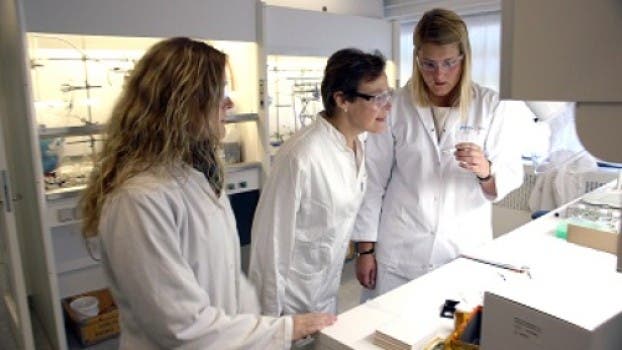Researchers from Denmark have synthesized crystalline materials that can bind and store oxygen in high concentrations, releasing them when needed. A single crystal about the size of a sponge can suck all the oxygen from a room.

Naturally, there are many potential applications for this type of technology. The most obvious one would be breathing underwater or in outer space. We do fine with the approximately 21 percent of oxygen in the air, but when you want to breathe in unnatural environments (like those mentioned above) you want oxygen in higher concentrations to fill your tanks – and this is exactly where this type of technology would come in handy.
“This could be valuable for lung patients who today must carry heavy oxygen tanks with them,” said professor Christine McKenzie of the University of Southern Denmark, in a statement. “But also divers may one day be able to leave the oxygen tanks at home and instead get oxygen from this material as it “filters” and concentrates oxygen from surrounding air or water. A few grains contain enough oxygen for one breath, and as the material can absorb oxygen from the water around the diver and supply the diver with it, the diver will not need to bring more than these few grains.”
The material they created is crystalline and it has two main characteristics: it can absorb vast quantities of oxygens and release it whenever necessary.
“An important aspect of this new material is that it does not react irreversibly with oxygen — even though it absorbs oxygen in a so-called selective chemisorptive process. The material is both a sensor, and a container for oxygen — we can use it to bind, store and transport oxygen — like a solid artificial hemoglobin,” says Christine McKenzie.
To make things even better, the material can do this several times without actually losing its ability to absorb oxygen – which means that it could not only be used reliably to breathe underwater, but it could also be used in artificial photosynthesis:
“We see release of oxygen when we heat up the material, and we have also seen it when we apply vacuum. We are now wondering if light can also be used as a trigger for the material to release oxygen — this has prospects in the growing field of artificial photosynthesis,” says Christine McKenzie.
The exact chemical make-up of the crystal haven’t been released yet (or at least I couldn’t find it), but the key element is cobalt.
“Cobalt gives the new material precisely the molecular and electronic structure that enables it to absorb oxygen from its surroundings. This mechanism is well known from all breathing creatures on earth: Humans and many other species use iron, while other animals, like crabs and spiders, use copper. Small amounts of metals are essential for the absorption of oxygen, so actually it is not entirely surprising to see this effect in our new material,” explains Christine McKenzie.
Depending on the atmospheric conditions (oxygen content, humidity etc) it can take anywhere between a few minutes and more than a day. Furthermore, different versions of the substance can bind oxygen at different speeds.
Other potential uses are in medicine:
“This could be valuable for lung patients who today must carry heavy oxygen tanks with them. But also divers may one day be able to leave the oxygen tanks at home and instead get oxygen from this material as it “filters” and concentrates oxygen from surrounding air or water. A few grains contain enough oxygen for one breath, and as the material can absorb oxygen from the water around the diver and supply the diver with it, the diver will not need to bring more than these few grains.”
Journal Reference: Jonas Sundberg, Lisa J. Cameron, Peter D. Southon, Cameron J. Kepert, Christine J. McKenzie. Oxygen chemisorption/desorption in a reversible single-crystal-to-single-crystal transformation. Chemical Science, 2014; 5 (10): 4017 DOI: 10.1039/C4SC01636J






